Unlock Expert Advice with Zero Commitment.
We’ve Eliminated the Barriers.
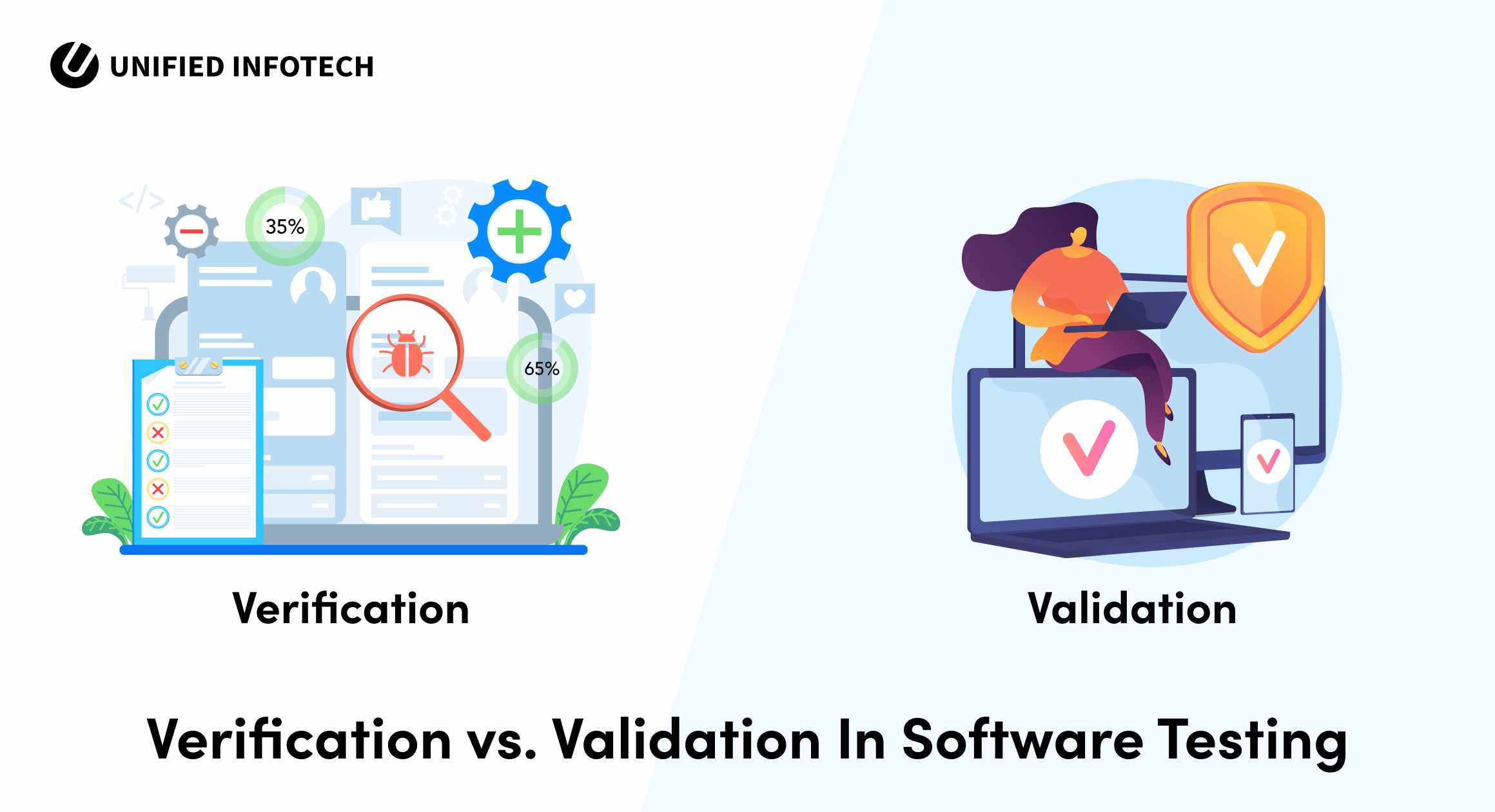
Verification and validation are two commonly followed processes for determining whether a software product fulfills its purpose and matches customer expectations. They are integral to software testing and are utilized throughout the development lifecycle.
Let’s know more about them.
Before proceeding to the differences between verification and validation, let us understand the Software Testing Life Cycle and how Unified Infotech adheres to its different phases. It involves a sequence of activities that our testing team performs to ensure software quality is of the highest standard and meets clients’ requirements perfectly.
This image showcases the Software Testing Life Cycle phases as followed by Unified Infotech.
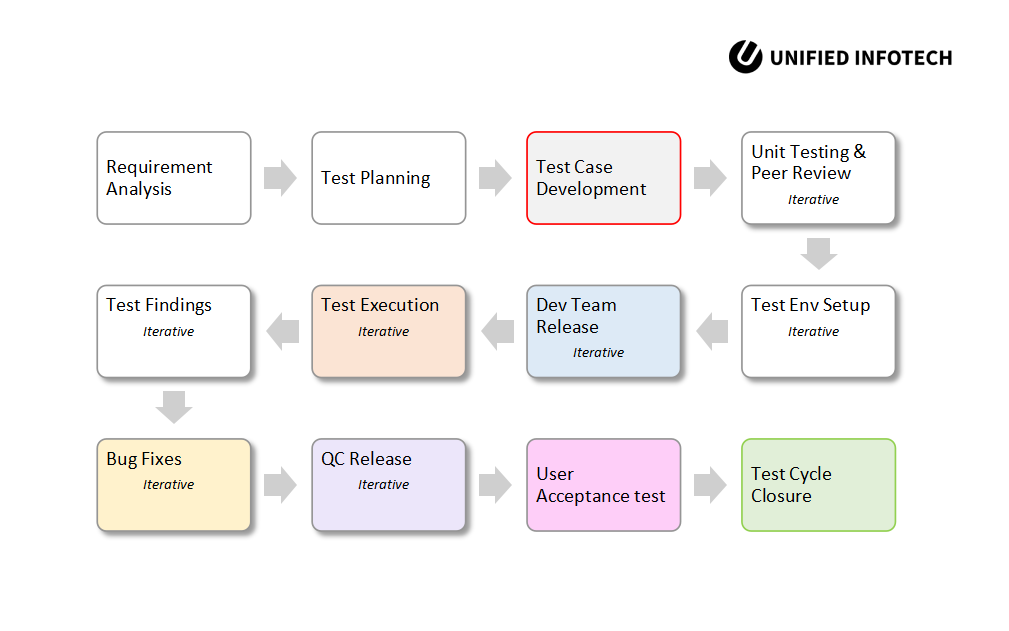
Now, let’s come to verification and validation in software testing.
“Verification and Validation” may sound similar but differ in many ways. The features of the software verification and validation (V&V) process:
While following the verification and validation model in quality assurance testing, emphasize both these perceptions of quality for an effective result. To understand why you should verify and validate and the difference between them, let’s learn about these two methods individually.
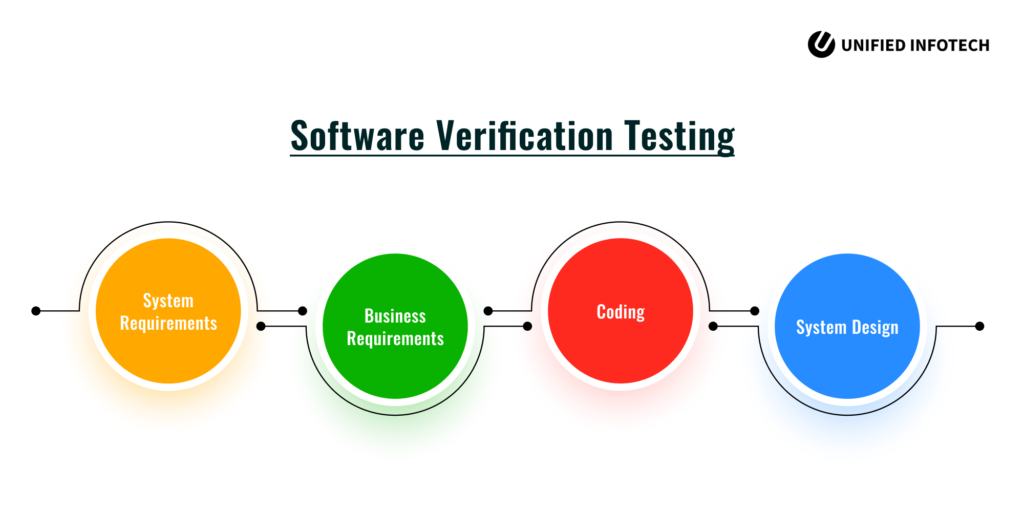
It is the process of verifying whether a software product fulfills the objectives behind its creation and is devoid of bugs. Verification examines every predetermined software specification – the plan, code, design, and documents – to ensure the product meets them.
It includes vital activities like checking the system requirements, business requirements, code walkthrough, and design review. These aim to ensure quality in every aspect of the software, from architecture to design.
The following 4 methods are commonly used:
The QA and testing team must conduct verification tests at every phase of the software development cycle. One must ensure that these evaluations are done before implementing any feature.
Let me give you an example. Suppose there is a button named “Add to Cart”. Before its development starts, a verification test will let the team know about all its predetermined requirements. The experts can then work on every element or feature without missing guidelines.
Before proceeding to the verification and validation difference, let’s understand the latter.
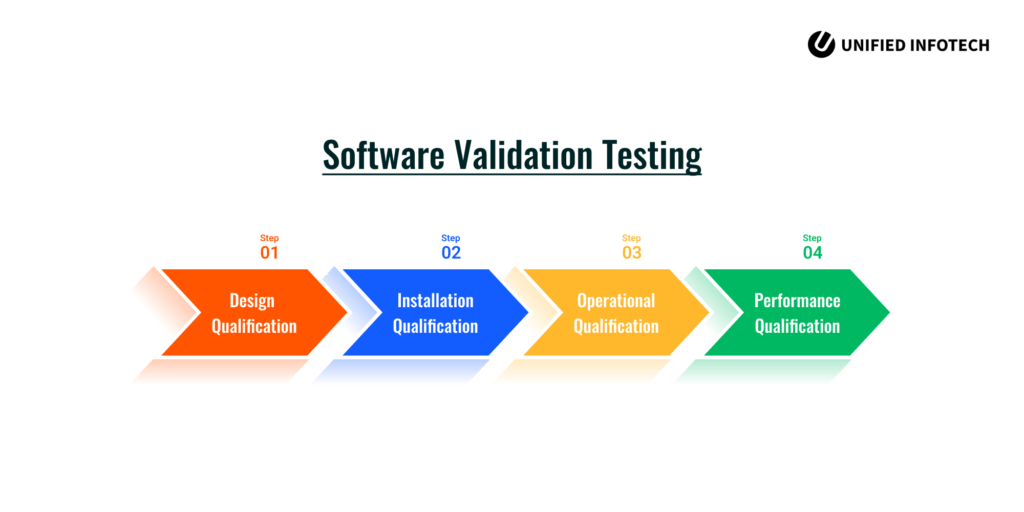
It involves checking whether the final software product is up to the mark and meets business requirements. The validation activity comprises smoke testing, functional testing, integration testing, and other viable techniques.
This software testing procedure helps ensure that the final product fulfills the desired use under the right conditions and environment.
It involves the following 4 phases:
The quality assurance team must validate the product after every step in its development process. Let me give you an example. Unit test, a subset of software validation, is run after developing every unit of code.
The integration test, another part of the validation process, is run after different modules have been developed individually and are ready for integration. Cross-browser testing is another vital aspect of software validation which involves assessing every feature works as needed on various browser-device-OS combinations.
Let me give an example of verification and validation in software testing. After verifying the “Add to Cart” button is built as expected, you can check whether it performs perfectly on different devices and browsers.
Verification and validation are integral parts of software development. These two viable processes can help determine whether the software product fulfills the predetermined requirements and meets the client’s expectations.
The image here can give you a clearer picture of the verification and validation (V&V) model and how these two processes work in tandem toward a common goal:
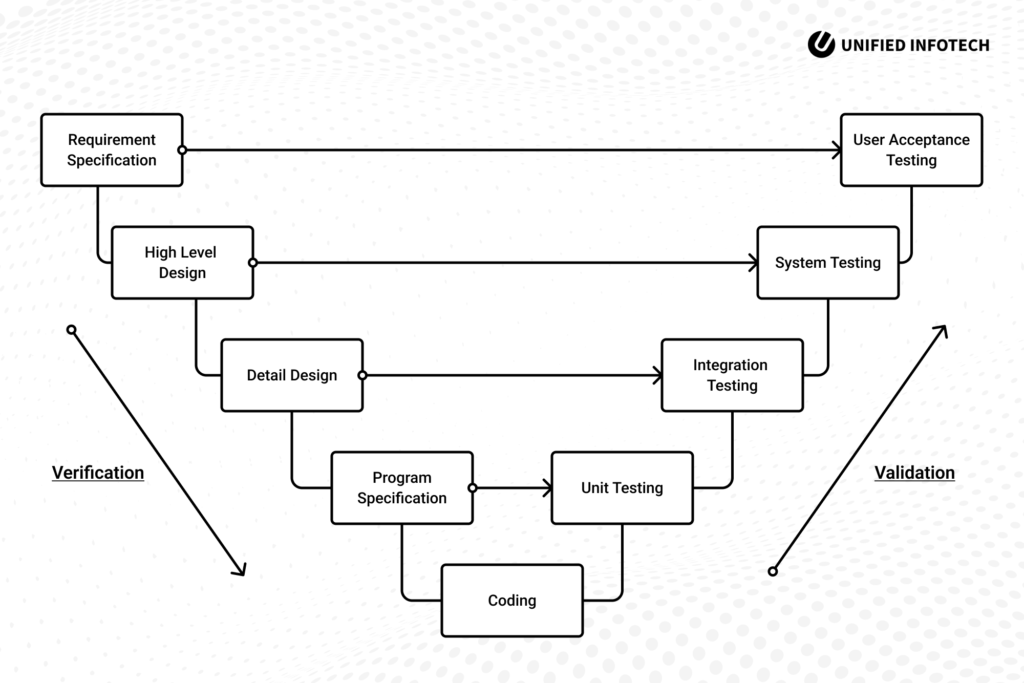
Let’s now understand the difference between verification and validation in software testing.
| Parameter | Verification | Validation |
| Timeline | It precedes software validation, i.e., it is done early in the software development cycle. | It follows the verification process. |
| Type of practice | It is the static practice of verifying whether the software meets all the predetermined specifications in the development phase. | It is the dynamic practice of testing the end product to ensure it fulfills customer requirements. |
| Execution of code | Verification does not require executing code. | Validation requires executing code. |
| Evaluation | This software testing method includes human verification of important assets. | This software testing method includes human and machine-involved software checking and validation. |
| Bug detection | Verification detects bugs at the start of each software development stage. | Validation detects only those bugs that were missed during the verification process. |
| Performed by | Both developers and testers conduct verification testing to ensure the product conforms to pre-planned specifications and standards. | Validation is mainly done by Quality Assurance experts that inspect the software thoroughly to ensure it works as it should. |
| Techniques | Software verification employs techniques like inspections, product and document reviews, desk-checking, etc. | The validation process involves different software testing techniques like unit tests, regression tests, integration tests, and more. |
| Support | Verification in software testing does not need any platform, device, operating system, or browser. | Software validation demands the use of devices, browsers, and operating systems. |
| Target | Software verification testing mainly focuses on specification documents, database table design, software architecture design documents, ER diagrams, traceability matrix, test cases and scenarios, and more. | Validation in software testing focuses on the final software that customers will use |
There must be an effective verification and validation plan and flawless implementation for delivering the best final software to customers. Think of them as two authentication layers that effectively evaluate whether the product is developed as per the plan and specifications.
Correct verification and validation uses in software testing will allow you to remove bugs that can ruin the user experience and generate criticism from end-users.
We’ve Eliminated the Barriers.
We stand by our work, and you will too.